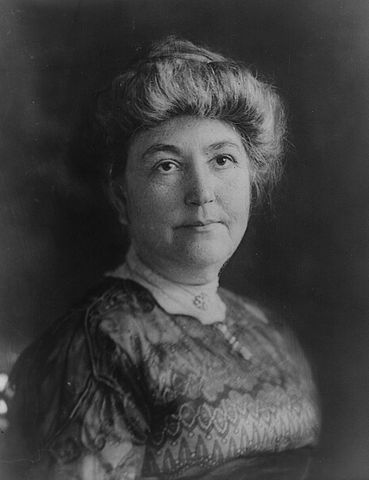
Ellen Wilson was the first wife of President Woodrow Wilson. She served as First Lady from March 4, 1913 until her death on August 6, 1914.
Early Life
Ellen Louise Axson was born on May 15, 1860, in Savannah, Georgia. She grew up in Rome, Georgia, where her father, Reverend S.E. Axson, was a Presbyterian minister. Ellen was a bright student with a keen interest in art, music, and literature. She graduated from Rome’s Female College. At eighteen, she won a bronze medal for freehand drawing at the Paris International Exposition.
Ellen’s mother died when she was a young woman, triggering her father to suffer a mental breakdown. Ellen was left to care for her younger siblings. Ellen met Thomas Woodrow Wilson in 1883 when he was traveling to Rome on business. He thought, “what splendid laughing eyes!” While they quickly began a courtship, they did not marry until two years later, with Ellen reluctant to leave her father in his condition and Woodrow wanting to finish graduate school.
Marriage to Woodrow Wilson
Ellen and Woodrow Wilson were married on June 24, 1885. The ceremony was officiated jointly by Woodrow’s father, Reverend Joseph R. Wilson, and Ellen’s grandfather, Reverend Isaac Stockton Keith Axson. The couple went on to have three daughters: Margaret Woodrow (1886–1944); Jessie Woodrow (1887–1933); and Eleanor Randolph (1889-1967).
Ellen was talented artist, with the quality of her paintings rivaling those of the professional artists of the period. However, she chose to devote her time to supporting her husband and raising her family. When she did display her work, she did so under a pseudonym.
First Lady of the United States
Woodrow Wilson was elected as president in 1912. The couple opted not to hold an inaugural ball, and their social gatherings were simple compared to many of their predecessors. At the same time, Ellen was regarded as a cordial hostess. Two of the couple’s daughters were married at the White House.
As First Lady, Ellen also used her position to advocate for improving housing in Washington, D.C.’s slums. She visited the city’s dilapidated alleys, bringing debutantes and Congressmen with her to see the squalid conditions firsthand. Following her death, Congress passed a bill to help improve housing in distressed areas of Washington.
When not engaged in official duties, Ellen continued to find solace in art, installing a studio with a skylight in the White House.
Death
Just one year into her tenure as First Lady, Ellen was diagnosed with a liver condition called Bright’s Disease. She died on August 6, 1914, at the age of 54. She was buried in a family plot in Rome, Georgia.








